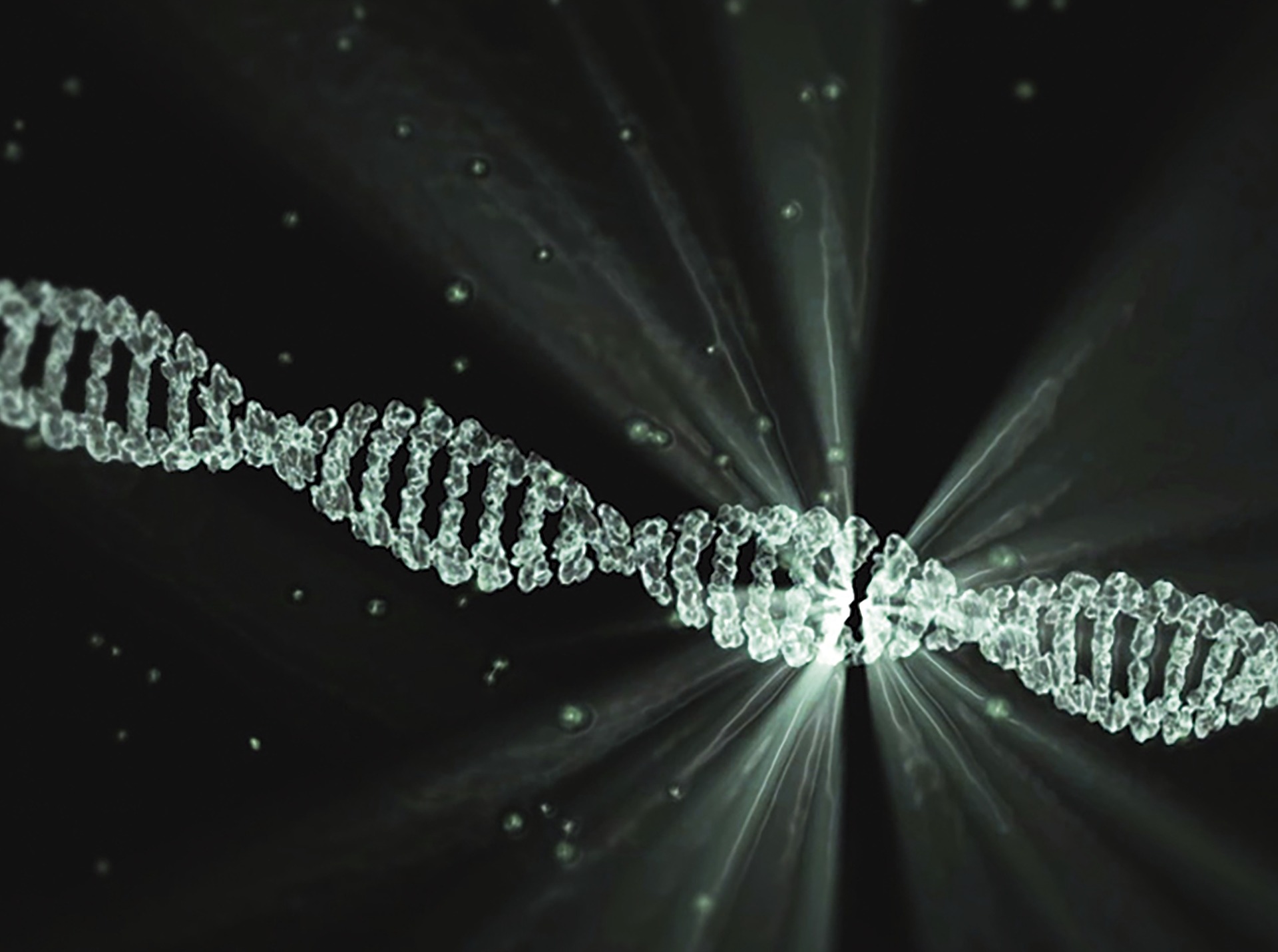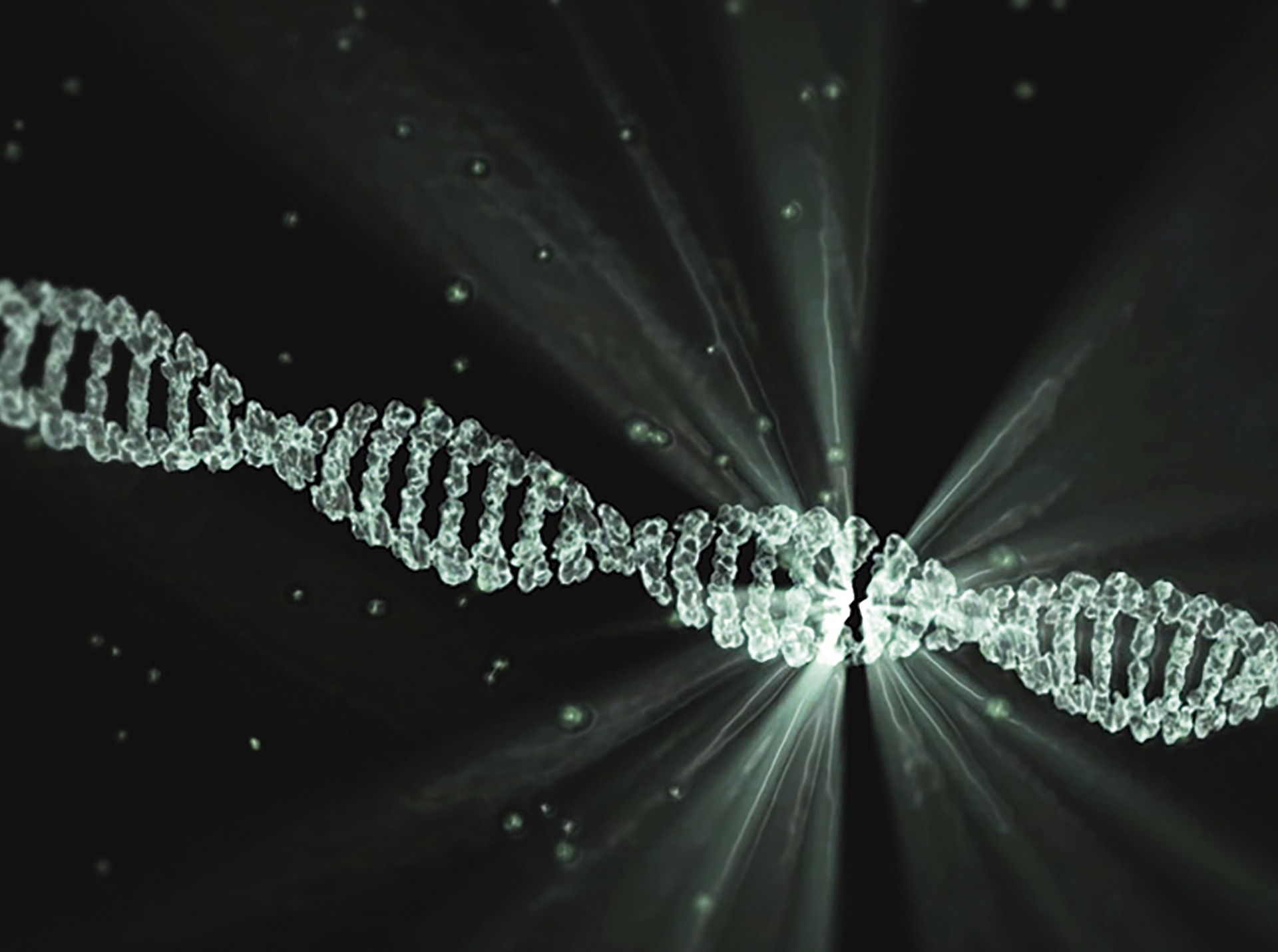The article, “The Fluoroquinolone Levofloxacin Triggers the Transcriptional Activation of Iron Transport Genes That Contribute to Cell Death in Streptococcus pneumonia” is difficult. It’s not light reading. I wish it was. I wish the articles that have information about how fluoroquinolones affect cells were easy to understand and to read. I wish that we had easy, simple answers about how fluoroquinolones lead to the myriad of adverse events that are listed on the FDA warning labels for them. I wish that more was known about how fluoroquinolones work. I wish that a list of definitions wasn’t necessary at the beginning of this blog post. But this stuff is hard, and a list of definitions is necessary, so, hereyago (some definitions paraphrased from the Wikipedia article because it’s easiest and I’m not a biochemist – for more info, go to the wiki page, or elsewhere):
Reactive Oxygen Species (ROS): “Reactive oxygen species (ROS) are chemically reactive molecules containing oxygen. Examples include oxygen ions and peroxides. ROS are formed as a natural byproduct of the normal metabolism of oxygen and have important roles in cell signaling and homeostasis. However, during times of environmental stress (e.g., UV or heat exposure), ROS levels can increase dramatically. This may result in significant damage to cell structures. Cumulatively, this is known as oxidative stress. ROS are also generated by exogenous sources such as ionizing radiation.” ROS can be incredibly nasty. They can lead to cellular damage, including DNA damage, and are related to every chronic disease there is. They’re also related to ageing. As damage from ROS (also called oxidative stress and free radicals) accumulates, ageing and the diseases of old age occur. Interestingly though, ROS are not all bad. They serve as signaling mechanisms within cells and play a large role in turning genes on and off (epigenetics). They need to be in balance. If they’re not in balance, a whole lot of things can go wrong. They’re kind of like tequila. A shot of tequila mixed with lime juice and other goodies, is excellent in a margarita. But if you drink the whole bottle, and then mix it with some whiskey, it’s really bad and destructive. The ways that ROS work within cells is not linear and difficult to study. Not a whole lot is known about ROS or how they affect human health. The article, “Exercise-Induced Oxidative Stress: Cellular Mechanisms and Impact on Muscle Force Production” has a really nice over-view of various ROS and their effects. It’s easier to think of them as different alcoholic drinks though. Some are beer – pretty benign unless you have a ridiculous amount of them. Others are potent – more like Everclear – and they can do a lot of damage to you quickly.
Fenton Reaction: “Iron(II) is oxidized by hydrogen peroxide to iron(III), forming a hydroxyl radical and a hydroxide ion in the process. Iron(III) is then reduced back to iron(II) by another molecule of hydrogen peroxide, forming a hydroperoxyl radical and a proton. The net effect is a disproportionation of hydrogen peroxide to create two different oxygen-radical species, with water (H+ + OH–) as a byproduct.” Basically, iron can “donate or accept free electrons via intracellular reactions and help in creating free radicals.” Free radicals are ROS. Some of the nastiest ROS are created in the Fenton Reaction – hydroxyl radicals and hydroperoxyl radicals. (“Exercise-Induced Oxidative Stress: Cellular Mechanisms and Impact on Muscle Force Production” has good info on both of those.)
Type II topoisomerases, gyrase and topoisomerase IV: “Type II topoisomerases maintain DNA topology and solve the topological problems associated with DNA replication, transcription, and recombination (20). Gyrase introduces negative supercoils into DNA (21), whereas topo IV relaxes DNA and participates in chromosome partitioning (22). Chromosomal topology in Escherichia coli is maintained homeostatically by the opposing activities of topoisomerases that relax DNA (topo I and topo IV) and by gyrase.” (from “The Fluoroquinolone Levofloxacin Triggers the Transcriptional Activation of Iron Transport Genes That Contribute to Cell Death in Streptococcus pneumonia”)
You got all that? Even the definitions are difficult. Now onto some highlights of the article, “The Fluoroquinolone Levofloxacin Triggers the Transcriptional Activation of Iron Transport Genes That Contribute to Cell Death in Streptococcus pneumonia.”
Basically, the researchers found that levofloxacin upregulated genes that are involved in iron uptake and triggered the Fenton reaction in certain bacteria. The increase in reactive oxygen species that ensued contributed to the lethality of the levofloxacin.
There are a few interesting things that should be noted about this. First, levofloxacin can upregulate genes. How consequential is this? Can eukaryotic genes be upregulated, or can only bacterial genes be upregulated? What about mitochondrial genes? What does upregulation of bacterial, mitochondrial and even eukaryotic nuclear genes do to the person who has taken levofloxacin?
Some interesting research is being conducted about the relationship between the microbiome and genetic, heritable traits. This National Geographic article, “The Most Heritable Gut Bacterium is… Wait, What is That?” notes some of the relationships that are being explored. Our genes can affect our microbiome, our microbiome can affect our genes, can the genes of our microbiome affect…. US? Where does the microbiome stop and where do we begin? Those are all questions that have not yet been answered. Unfortunately, fluoroquinolones, like levofloxacin, are thoroughly messing up our microbiomes and even causing the upregulation/expression of certain genes.
The second thing of note from the article is that the upregulated genes caused the activation of the Fenton reaction in the bacterial cells. Again, how does this affect our microbiome? How does it affect US? Hydroxyl radicals and superoxide anions are nasty ROS that damage everything in their wake. What happens to the health of the microbiome, and the host (the person) when their gut is suddenly full of toxic ROS? Leaky gut syndrome? Autoimmune reactions? The multi-symptom, chronic illness that is fluoroquinolone toxicity syndrome?
There is quite a bit of evidence that fluoroquinolones do to mitochondria what they do to bacteria – disrupt the process of DNA replication and reproduction and lead to destruction and cell death. I think that mitochondrial destruction has a lot to do with fluoroquinolone toxicity. However, I don’t think that the role of disruption of our microbiome and destruction of our gut bacteria should be overlooked. The signaling that goes on within our microbiome, and between “us” and our microbiome, is critically important and poorly understood. Triggering bacterial DNA destruction and death, upregulation of genes and the Fenton reaction – which leads to production of highly destructive ROS, is a very, very, very bad idea – even if it just stays within the microbiome.
The conclusion of “The Fluoroquinolone Levofloxacin Triggers the Transcriptional Activation of Iron Transport Genes That Contribute to Cell Death in Streptococcus pneumonia” is that:
“In conclusion, we have shown for the first time that fatDCEB transcription is regulated by the supercoiling level. The primary effect of the interaction of LVX-topo IV is the upregulation of the operon by local increase in DNA supercoiling. This upregulation would increase the intracellular level of iron, which activates the Fenton reaction, increasing the concentration of hydroxyl radicals. These effects were observed before the inhibition of protein synthesis mediated by LVX. All these effects, together with the DNA damage caused by the inhibition of topo IV, would account for LVX lethality. The possibility to increase FQs’ efficacy by elevating the levels of intracellular ferrous iron remains open.”
Because, apparently, seeing the big picture of the symbiotic relationship between the microbiome and the rest of the organism (the person), isn’t the goal. The goal is to kill bacteria. It’s ridiculously short sighted. Sigh.
Because we’re in Floxieville, there has to be a paradox. Supplementing iron helped me more than just about anything else. Iron is one of the few supplements that made me feel markedly better immediately after taking it. Other Floxies have reported that their ferritin levels are low post-flox. The role of the Fenton reaction in fluoroquinolone toxicity would lead one to think that iron should be the last thing that a Floxie might need or want. It helped me though. I had more energy and even my tendons felt better when I started supplementing iron. I don’t know if this has something to do with the kind of iron in my supplement/body – FE3 or FE2 – or if the iron had been converted to other chemical compounds and I needed to replace it, or what. I do know that, as I said in the beginning of this post, this stuff is hard.
The Fluoroquinolone Levofloxacin Triggers the Transcriptional Activation of Iron Transport Genes That Contribute to Cell Death in Streptococcus pneumonia provides a good description of how fluoroquinolones work:
“The killing effect of FQs has been related to the resolution of reaction intermediates of DNA-FQ-topoisomerase complexes, which generates irreparable double-stranded DNA breaks (31). This could occur in E. coli by two pathways, one dependent on protein synthesis and the other independent of it. It has been shown that hydroxyl radical action contributes to FQ-mediated cell death occurring via a protein-dependent pathway (32). This result agrees with a recent proposal suggesting that, following gyrase poisoning, hydroxyl radical formation utilizing internal iron and the Fenton reaction (33) is generated and contributes to cell killing by FQs (34) as well as by other bactericidal antibiotics (35, 36). In this mechanism, proposed for Enterobacteriaceae (35, 37), the primary drug interactions stimulate oxidation of NADH via the electron transport chain that is dependent on the tricarboxylic acid cycle. Hyperactivation of the electron transport chain stimulates superoxide formation. Superoxide destabilizes the iron-sulfur clusters of enzymes, making Fe2+ available for oxidation by the Fenton reaction. The Fenton reaction leads to the formation of hydroxyl radicals that would damage DNA, proteins, and lipids (38), which results in cell death. Instead of a generalized oxidative damage, a recent study supports that the main action of hydroxyl radicals is the oxidation of guanine (to 8-oxo-guanine) of the nucleotide pool. The incomplete repair of closely spaced 8-oxo-deoxyguanosine lesions caused lethal double-strand DNA breaks, which would underlie much of the cell death caused by beta-lactams and FQs (39). However, recent investigations have questioned the role of hydroxyl radicals and intracellular iron levels in antibiotic-mediated lethality using antibiotic concentrations either similar to (40) or higher than (41) those used previously. The disparate results obtained using diverse antibiotic concentrations and times of treatment emphasize the complexity of the lethal stress response (42).”
Similar destruction happens in mitochondria. As I mentioned though, even if it didn’t happen in mitochondria, and only happened in bacteria, that destruction and those reactions are horrible things to do to a person’s microbiome. It is, after all, part of us.
All of the people at the FDA who think that it’s okay not to strictly regulate drugs that disrupt the process of DNA replication and reproduction, and lead to the upregulation of genes and induction of the Fenton reaction, which leads to high levels of highly reactive ROS, should be fired. I’ve learned enough biochem in the last 3 years to know that induction of the Fenton reaction in any part of the body is a really bad idea. The scientists at the FDA should be able to figure this out.













… [Trackback]
[…] Info to that Topic: floxiehope.com/fluoroquinolone-induced-gene-upregulation-and-ros/ […]
… [Trackback]
[…] Find More Information here on that Topic: floxiehope.com/fluoroquinolone-induced-gene-upregulation-and-ros/ […]
… [Trackback]
[…] There you can find 90085 additional Info to that Topic: floxiehope.com/fluoroquinolone-induced-gene-upregulation-and-ros/ […]
… [Trackback]
[…] Read More to that Topic: floxiehope.com/fluoroquinolone-induced-gene-upregulation-and-ros/ […]
… [Trackback]
[…] Read More on on that Topic: floxiehope.com/fluoroquinolone-induced-gene-upregulation-and-ros/ […]
… [Trackback]
[…] Info to that Topic: floxiehope.com/fluoroquinolone-induced-gene-upregulation-and-ros/ […]
… [Trackback]
[…] Read More Info here on that Topic: floxiehope.com/fluoroquinolone-induced-gene-upregulation-and-ros/ […]
… [Trackback]
[…] Read More on that Topic: floxiehope.com/fluoroquinolone-induced-gene-upregulation-and-ros/ […]
… [Trackback]
[…] Info to that Topic: floxiehope.com/fluoroquinolone-induced-gene-upregulation-and-ros/ […]
… [Trackback]
[…] Read More Info here on that Topic: floxiehope.com/fluoroquinolone-induced-gene-upregulation-and-ros/ […]
… [Trackback]
[…] Find More on that Topic: floxiehope.com/fluoroquinolone-induced-gene-upregulation-and-ros/ […]
… [Trackback]
[…] Here you can find 53373 additional Information to that Topic: floxiehope.com/fluoroquinolone-induced-gene-upregulation-and-ros/ […]
… [Trackback]
[…] Read More on to that Topic: floxiehope.com/fluoroquinolone-induced-gene-upregulation-and-ros/ […]
… [Trackback]
[…] Find More on that Topic: floxiehope.com/fluoroquinolone-induced-gene-upregulation-and-ros/ […]
… [Trackback]
[…] Read More Information here on that Topic: floxiehope.com/fluoroquinolone-induced-gene-upregulation-and-ros/ […]
… [Trackback]
[…] Here you will find 34206 additional Information to that Topic: floxiehope.com/fluoroquinolone-induced-gene-upregulation-and-ros/ […]
… [Trackback]
[…] Read More to that Topic: floxiehope.com/fluoroquinolone-induced-gene-upregulation-and-ros/ […]